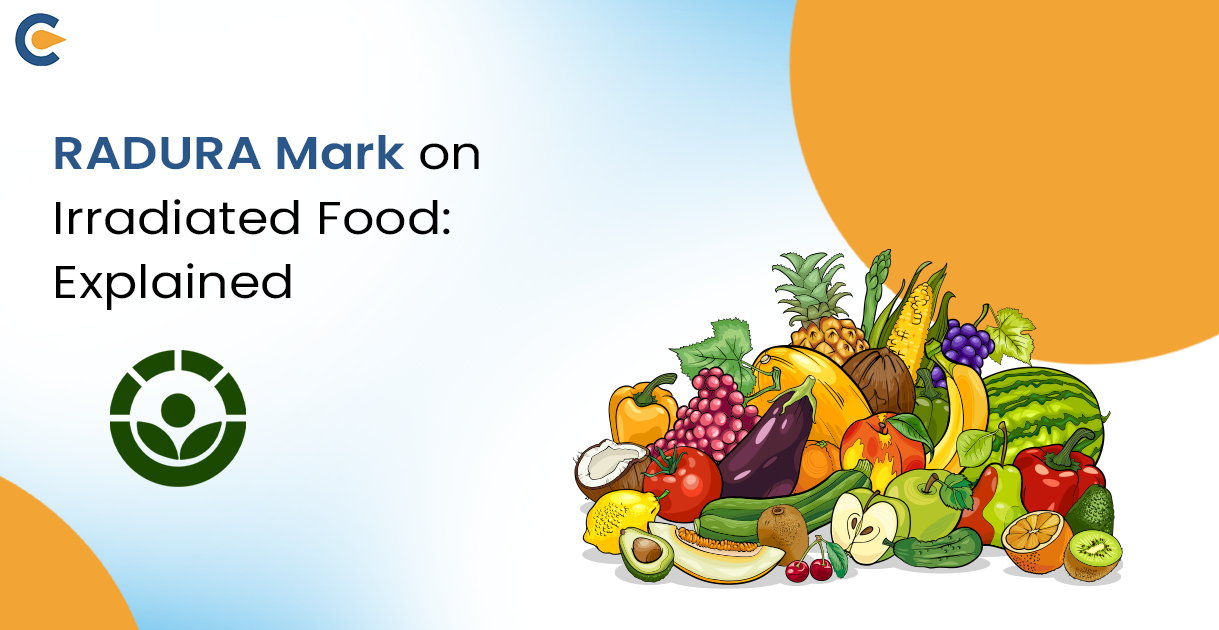Food irradiation is an effective method that may be used to extend the shelf life of food by getting rid of diseases and insects. Products that are frozen or fresh might use this method without losing any of their nutritional worth. Food irradiation helps to enhance food preservation and facilitate international trade by addressing safety issues and regulatory requirements. Food irradiation is used for a number of purposes, all of which are intended to improve food safety and increase shelf life. In order to promote transparency and regulatory compliance, as well as to notify consumers about irradiated goods, the required RADURA mark is essential.
What is Food Irradiation?
Food irradiation is the technique of exposing food and food packaging to ionizing radiation to lengthen their shelf lives and get rid of insects and other microbes that might contaminate the food. Food irradiation can render food safe for ingestion, just like pasteurization prevents milk from spoiling, and canning preserves fruits and vegetables for a more extended period of time. The Indian government didn’t license food radiation for domestic marketing and consumption of onions, potatoes, and spices until 1994. The FDA has typically permitted three types of radiation for use on food: electron beams, gamma rays, and x-rays.
India is seeing a gradual increase in the use of food radiation, and some engineers were among the first in the nation to promote these practices. India continues to promote the benefits of using food radiation techniques for safer food consumption, having successfully finished several gamma irradiation facilities both domestically and internationally. Food irradiation can only be employed when it is required for food safety or hygiene or when it meets a technical necessity. It doesn’t take the place of the necessity for safe food handling procedures in the home and in the workplace. For example, certain bacteria could endure radiation exposure to meat. Food illness might still result from these germs growing in meat that hasn’t been chilled.
What does the RADURA mark mean?
The RADURA mark is a symbol that is applied to food products’ packaging to signify that they have undergone the process of food irradiation. Various national and international agencies have mandated this mark as a regulatory obligation to maintain openness and give customers details about the processing of the food they receive.
Regulatory agencies, including the U.S. Food and Drug Administration and international food standards organizations, endorse this mark. It guarantees unambiguous communication regarding the use of ionizing radiation on food products. The mark is a circle with a green flower inside of it. The RADURA mark illustrates the irradiation process graphically without raising any red flags. This label, which is placed clearly on the packaging, tells customers about the safety and handling of food. This RADURA Mark gives the customers the power to decide what to buy depending on their tastes and knowledge about the radiation.
The RADURA mark complies with the value of transparency, which tells customers whether a food product has been exposed to radiation so they can make an informed decision based on it. RADURA mark is one of the global initiatives to standardize food labelling, which also guarantees uniform procedures throughout national boundaries, aided by agencies. In order to allay worries and debunk myths regarding food irradiation, this mark is crucial. RADURA mark is the direct indication that the foods that have been irradiated are safe and have undergone a procedure that has been verified by science.
What do you mean by ‘Labelling of Irradiated Food’?
A label stating that the food, ingredients, or components have been treated with ionizing radiation is required if the product has been radioactively treated or contains radioactively treated ingredients or components. This notice has to be put up near the food if it is one of those items without a label (such as all fruits sold loose). Apart from the statutory marking, food items that have been exposed to radiation may additionally have the international sign for radiation, known as the RADURA mark.
What does the RADURA mark do?
When it comes to irradiated food, the RADURA mark is essential since it is a unique mark that informs customers of specific facts related to the irradiated food. Visibly identifiable, the RADURA mark is usually found on the packaging of items that have been radioactively contaminated. The RADURA mark is easily recognized by its unique pattern. This mark’s main objective is to notify customers when a food product has been exposed to radiation. It gives customers information about the food’s processing history, enabling them to make decisions based on their tastes. The use of this mark is mandated by law in numerous nations.
The RADURA mark guarantees that the manufacturers have followed specific rules and specifications for the labelling of foods contaminated by radiation. A universally accepted standard for labelling irradiated food is offered by the RADURA mark. By assuring uniformity in labelling procedures between nations, this standardization promotes international trade. Producers and merchants support transparency in the food supply chain by prominently displaying the RADURA brand.
What are the advantages of Irradiated Food?
Irradiated foods have many merits. Some of the advantages are mentioned below:
Preventing food-borne diseases:
They have the ability to eradicate microorganisms that can lead to food-borne diseases, such as Salmonella and Escherichia coli.
Reduce insects:
They eliminate any insects that can be on the different imported tropical fruits. Additionally, radiation techniques reduce the need for additional pest control measures, which almost always have a negative impact on the fruit’s flavour.
Delay in ripening or sprouting:
Irradiation can prevent sprouting in crops like potatoes and delay ripening in some fruits to lengthen their shelf lives.
Preservation:
Food can deteriorate and decompose due to inactive microbes. In order to eradicate these germs and lengthen the food’s shelf life, irradiation procedures are used.
Sterilization:
Foods can be rendered safe for storage without requiring refrigeration by using radiation techniques. In hospital settings, these sterilized meals can be given to patients with severe immune system deficiency, such as those receiving chemotherapy or those with AIDS.
RADURA Mark Mandatory for Irradiated Food: FSSAI
The food industry’s leading food safety authority, FSSAI, has implemented a number of practical steps to guarantee food safety and cleanliness. Additionally, it regularly inspects food establishments to verify if they have a food license or an FSSAI registration. To protect public health and ensure food safety, the Food Safety and Regulatory Authority (FSSAI) has recently put in place a number of regulations pertaining to the food industry. Regarding this, food items that have been exposed to radiation or ionizing radiation should be labelled as such, according to a recent notification from the Food Safety Agency.
The Food Safety and Standards Authority of India (FSSAI) has gone ahead and established guidelines for the irradiation of food after realizing the benefits of food irradiation in improving food safety. These recommendations cover maximum permitted doses, acceptable radiation sources, packaging specifications, and labelling criteria. The irradiation procedure is closely supervised and carried out in accordance with international standards, thanks to the FSSAI Registration. According to the FSSAI announcement, all producers that deal with food items that have been treated with radiation and have an FSSAI registration are required to place the “RADURA” mark next to a tag that says, “processed by irradiation method” or “treated by irradiation.”
‘Irradiated Food is Safe Busting Myths Around It’ is an advice statement on irradiated food released by the FSSAI. It attempts to educate Food Business Operators (FBOs) on the health benefits, safety, and technological advantages of irradiated food. The paper contains comprehensive details about radiation technology, including its advantages, food irradiation facilities in India, public opinion, business opportunities in India, and worldwide use of radiation technology.
The Food Safety and Standards (Food Products Standards and Food Additives) Amendment restrictions, 2016, have notified radiation processing restrictions in India. Additionally, in accordance with the FSS (Food Products Packaging and Labeling) Regulations, 2011, items that have been exposed to radiation are marked, and a typical label will have the ‘RADURA’ mark.
What are the other essential food licenses in India?
The Food Safety and Standards Authority of India (FSSAI) has governed the Food Safety and Standards (Licensing and Registration of Food Business) with an eye towards protecting public health. The acquisition of specific licenses is required. Failure to adhere to these regulations might result in legal issues for the business.
FSSAI License
Food business operators are issued licenses and registrations under the FSS (Licensing & Registration) Regulations, 2011, under a three-tiered system that is based on sales and the maximum capacity for food processing. The FSSAI Central License, FSSAI State License, and FSSAI Basic Registration are the three licenses. It is necessary for you to register with the FSSAI and obtain an FSSAI license if you are in the food industry. Food Business Operators (FBOs) that abide by the guidelines set forth in the FSS Act are granted a 14-digit license number by the FSSAI. All food goods need to have the FSSAI emblem and license number printed on them. Additionally, it needs to be posted on the food business’s property.
Following are some of the licenses that the FSSAI has issued:
FSSAI Basic License: FBOs must apply for FSSAI Basic Registration if their yearly turnover is less than Rs. 12 lakhs. It covers little and insignificant food enterprises.
FSSAI License – State License: FBOs must apply for an FSSAI State License if their yearly turnover is more than Rs. 12 lakhs but less than Rs. 2 crores. Mostly, medium-sized food enterprises are affected.
FSSAI License – Central License: FBOs are required to apply for an FSSAI Central License if their yearly turnover exceeds Rs. 2 crores. It covers both importers and exporters of significant food products.
AGMARK
Agricultural Marking is referred to as AGMARK. It is the Indian government’s exclusive trademark. It includes quality standards for a range of agricultural and related goods, including fruits, vegetables, oils, legumes, and more. These goods are grouped according to their quality in relation to a number of variables, including size, kind, weight, colour, and more. A food product might be classified as unique, good, fair, or average. We refer to these grades as “AGMARK Grading.”
BIS
The Indian national standards agency, the Bureau of Indian Standards, creates Indian Standards for a wide range of products, procedures, testing techniques, codes of conduct, and other things. BIS supports industry standardization and quality assurance. To utilize the ISI mark on their products, food producers must apply to BIS and obtain their approval. Before granting authorization to use an ISI mark, the BIS examines the plant, analyses the goods, confirms the products’ quality, and visits additional facilities. Additionally, they guarantee that the food producers utilize control methods and a clearly defined quality control system at every stage of manufacturing.
ISO 22000
Any organization in the food chain, regardless of size or position, can adopt the Food Safety Management System developed by the International Organization for Standardization. It describes the steps a food maker must take to demonstrate that it has the capacity to manage risks to food safety and guarantee food safety. The ISO 22000 certification gives customers trust in the product and ensures that an appropriate food safety management system is in place.
HACCP
A risk-based strategy called “hazard analysis and critical control points” aids in preventing food contamination in any way when it is being produced, packaged, and distributed. Instead of waiting to evaluate food items for dangers after the fact, the HACCP takes steps to identify possible problems with food safety before they exist. Strict attention to hygienic procedures is required by the HACCP principle throughout the production process.
GHP
Good Hygiene Practices (GHP), which are linked to every step of the food processing chain, guarantee that the food sector has a well-established hygiene management system. In order to lower food contamination and food-borne illnesses, it inspects facilities for sanitation, pest management, employee hygiene, food handling procedures, and the prevention of physical and chemical risks. The criteria for food safety are of more relevance to the current generation. Therefore, having a food license that ensures the food’s quality is always advantageous. The food business may still need a great deal more licenses. Obtain the necessary license to set your company apart from the competition.
Conclusion
Food irradiation is considered a significant breakthrough in food safety and preservation, backed by the strict guidelines set forth by the FSSAI. It makes a major contribution to a safer and more sustainable food supply because of its capacity to eradicate dangerous viruses and pests while maintaining food quality. With increasing public awareness of the advantages and safety of irradiated food, this technology has the potential to significantly impact the direction of food security and preservation in the future.
Frequently Asked Questions (FAQs)
Since 1986, the U.S. Food and Drug Administration (FDA) has required that goods that have been exposed to radiation bear labelling that indicates either “treated with radiation” or “treated by irradiation,” in addition to the RADURA.
The Prevention of Food Adulteration Act (1954) Rules were modified by the Indian government in 1994, allowing the irradiation of potatoes, onions, and spices for the home market. In 1998 and 2001, further things were authorized.
Foods that have been irradiated are required by the FDA to display the global sign for radiation. On the food label, look for the RADURA symbol next to the words “Treated with radiation” or “Treated by irradiation.”
Since it is typically impossible to identify irradiated food from its untreated counterparts from outward appearance, labelling is crucial to protecting customers’ freedom to make educated decisions.
The words “treated by irradiation” (or “with radiation”) and the “RADURA” insignia, which is often a green symbol that resembles a plant inside a circle with dashed lines on top, must appear on product labels where the whole contents were irradiated.
It is required by law that food that has been exposed to radiation be labelled with a green emblem and the phrases “Treated with Radiation” or “Treated by Irradiation.” The green RADURA mark, which is present on items supplied for public sale, is well recognized as a sign of contaminated food.
The worldwide indicator that a food product has been exposed to radiation is the RADURA mark. The RADURA often has a green colour and resembles a circle of plants. The circle’s upper half is dashed.
In the context of reasoning, radiation is defined as the quantity of photons released by a single source. In contrast, radiation refers to the process of measuring the amount of radiation that reaches the surface.
Read Our Article: Food Safety Laws and the Role of FSSAI in India











